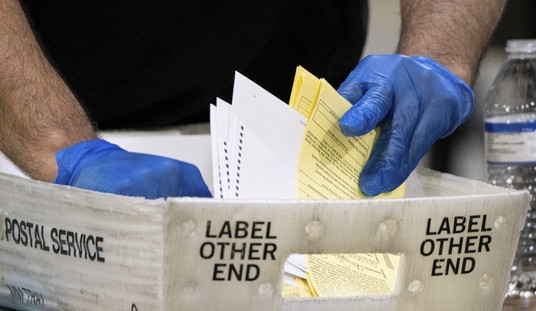In 1977’s Annie Hall, Woody Allen memorably satirized the differences between the cultures of Los Angeles and New York, tropes that exist to this day. And while New Yorkers look down upon L.A. culture with a certain amount of justified bemusement, high tech residents of Silicon Valley observe the patched-together technological infrastructure of New York with a wry grin as well. My wife once compared New York to those scenes in Terry Gilliam’s Brazil or the Max Headroom TV series where vast banks of computers exist side by side with telephone and electrical systems that look like they’re out of 1930s Berlin. (Mike Bloomberg’s obsession with bike lanes only increased the Blade Runner-like atmosphere of the place.)
So it’s not surprising that New Yorkers don’t quite seem to get the Internet in the same way as we Silicon Valley residents. (Yes, I’m stereotyping wildly here. See also: observations of Allan Stewart Konigsberg on L.A.) Legendary technology expert Sen. Ted Stevens, the Marshall McLuhan of the 21st century, famously referred to the Internet as “a series of tubes” in 2006. Long before the birth of the Internet, New York had its own series of tubes — the subway, and its use by millions of commuters is a big reason why the city can sustain five major newspapers. And while the New York Times is these days, a scrappy underdog struggling for survival (as Iowahawk would say) when compared to the much larger readership of the Wall Street Journal (and on the Web, the London Daily Mail), you’d think its editors wouldn’t be so provincial as to allow the following passage about NBC and Brian Williams into print:
NBC’s handling of Mr. Williams suggests that the network is still clinging to an increasingly anachronistic vision of the anchor’s chair as a sacred throne, and the anchor as the voice of moral authority. It’s a response that seems in many ways tone-deaf to the striking changes in the way we consume information — changes that are reshaping the relationship between newscasters and consumers. The news anchor is no longer the embodiment of reason and truth; his voice is now just one of many. And network TV is just another platform.
Who is “we” in the above passage? Those of us on the Internet don’t watch TV news anymore, except when held hostage in airport departure lounges or when a breaking horror story on the magnitude of 9/11 or a Space Shuttle exploding occurs. (Or in the case of the Ferguson and Baltimore riots, not for the news, but to grimly observe CNN and MSNBC stoking the flames with evil abandon.) The only people left watching the nightly news on a regular basis are those dwindling number of elderly citizens too scared to go online. (Just check the target audience of the commercials that run.) When Tom Brokaw retired in 2004, paving the way for Williams’ succession, Thomas Sowell wrote:
During his long tenure as NBC News anchorman, Tom Brokaw took that program from last place among the big three broadcast networks to first place. But he had more viewers when he was in last place, more than 20 years ago, than he had in first place this year. That is because fewer people now watch NBC, ABC, or CBS News. Good!
Today, those numbers are at ten million or less for each of the Big Three networks’ nightly news broadcasts. The other day, Kathy Shaidle spotted a similarly antediluvian tone from the New Yorker. In response, she quipped, “Someone at The New Yorker just discovered the Web, everybody!”, specifically social media such as Twitter, blog comments, and Internet forums, causing the magazine to sniff:
It’s comments all the way down. Social media, at any rate, and Twitter in particular, are a continually metastasizing accretion of marginalia. A tweet is a comment implicitly calibrated to provoke further comment, by way of replies or retweets or favorites: it is a form of text produced in order not just to be read but to generate the production of further text. (Almost every time I compose a tweet and click send, I become discomfitingly aware that I just made the Internet slightly longer than it already was, which was way too long in the first place.)
Who knew! Other than everyone (with the exception of Brian Williams viewers) in the vast empty area between New York and L.A. in the New Yorker’s classic 1976 “View of the World from 9th Avenue” cover, that is. As Kathy told interviewer Mary Lou Ambrogio last year, “Read the paper upside down:”
Q: When you post articles about controversial subjects, you often introduce the article by saying, “As always, the real story is in the comment section”. That really resonates with me because I’m always struck by this phenomenon myself whereby, you’ll read a very milquetoast article on a touchy subject and then see that in the comment sections, readers let loose and talk like real people. Is it just the anonymity that makes people feel safe about expressing themselves honestly? And what, if anything, does that say about how we are being served by the main stream press when it seems like people aren’t satisfied with the kind of coverage touchy subjects get?
A: One place you’ll really see that phenomenon in action is in daily papers covering a “controversial” local story. For instance, a few years ago, there was a “racist” incident at a high school basketball game in the States; allegedly some white players had called the Hispanic players names. In the comments, however, people on the scene argued that the Hispanic players had started the name calling, but that the naive reporter didn’t realize that what they were saying was an anti-white phrase – or knew but didn’t want to report that, because that would ruin the liberal narrative. So while the comments are often full of cranks, you can also see a lot of Average Joe wisdom and insight (and fact checking) in there. That’s why I often say, “Read the paper upside down.”
Over 20 years ago, libertarian computer scientist John Gilmore famously said, “The ‘Net interprets censorship as damage and routes around it.” Having constructed a fantasyland view of America that only exists in a handful of TV networks and newsrooms, the New York-dominated legacy media was caught utterly flat-footed both when Matt Drudge appeared on the scene in 1998, and a few years later, when the technology of the Blogosphere allowed anyone to self-publish news and opinion. No wonder they’re terrified of a vast army of Internet commenters critiquing their work. As Pauline Kael, the New Yorker’s film critic once said of Republicans, “I live in a rather special world…They’re outside my ken. But sometimes when I’m in a theater I can feel them.”
Of course, there is one group that all of us, Democrats and Republicans alike, whether we work in old media like the New Yorker and New York Times, or in new media can look down upon with equal derision — YouTube commenters:











Join the conversation as a VIP Member